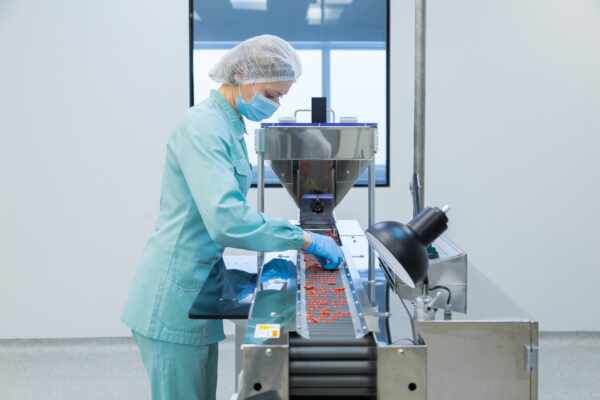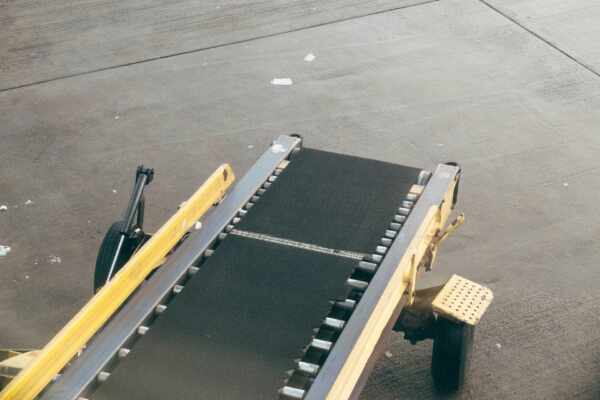In the highly competitive food manufacturing industry, enhancing productivity and operational efficiency is essential for ensuring long-term success and maintaining a competitive edge in the market. One significant component of any food manufacturing facility is its conveyor belt system, which plays a critical role in transporting food products and materials throughout the production line.
Employing innovative conveyor belt equipment can help streamline your food manufacturing process, boosting productivity and efficiency while maintaining optimal product quality and safety standards. By adapting to new technologies, adjusting your system’s design, and choosing the appropriate conveyor belt equipment for your specific food production processes, you can significantly improve your facility’s performance and drive sustainable growth.
In this guide, we will explore the various types of conveyor belt equipment available, their applications in the food manufacturing industry, and how they can contribute to overall productivity enhancement. We will discuss the importance of selecting the right conveyor belt equipment for your specific facility and dive into considerations surrounding system design, equipment maintenance, and worker training.
Arm yourself with the knowledge and tools to maximise productivity in your food manufacturing facility, utilising innovative conveyor belt equipment and best practices to transform your operations and achieve long-lasting success.
Understanding Conveyor Belt Equipment Options
To select the perfect conveyor belt equipment for your food manufacturing facility, it’s crucial to understand the range of available options and their respective applications:
1. Steel Belts: Designed for durability and easy cleaning, steel belts are ideal for heavy-duty applications, high temperatures, and conveying abrasive materials. Their robust construction ensures longevity and reduced downtime, enhancing productivity in your facility.
2. Plastic Modular Belts: Comprised of interlocking, easy-to-replace plastic modules, these belts offer versatility and adaptability, accommodating various food manufacturing needs. Their lightweight design reduces energy consumption while ensuring optimal product safety and hygiene standards.
3. Fabric Belts: Favoured for their flexibility and wide range of applications, fabric conveyor belts cater to specific food manufacturing processes, such as baking, cooling, and food packaging. Their lightweight design promotes energy efficiency and productivity.
4. Customised Conveyor Systems: Tailored to your facility’s unique requirements, customised conveyor systems can integrate multiple belt types and configurations to facilitate seamless and efficient material handling throughout the production line.
Designing Your Conveyor System for Optimal Productivity
Implementing a well-designed and efficient conveyor system is essential for maximising productivity in your food manufacturing facility. Follow these strategies to achieve a streamlined conveyor system:
1. Analyse Your Facility’s Needs: Begin by assessing your food manufacturing processes, identifying the requirements of each stage, and determining the suitable conveyor belt equipment to facilitate efficient material handling.
2. Optimise Conveyor Layout: Design your conveyor system to minimise complexity, reduce material handling time, and enhance workflow efficiency. Consider factors such as straight lines, minimal bends, and efficient transfer points to streamline system design.
3. Integrate Automation Technologies: To further improve productivity, incorporate automation technologies into your conveyor system, such as automatic sorting, robotic pick-and-place applications, and advanced tracking and sensing capabilities.
Equipment Maintenance and Worker Training
Regular equipment maintenance and proper worker training are essential components of maximising productivity in your food manufacturing facility, ensuring the smooth operation of your conveyor belt system:
1. Scheduled Maintenance: Implement a routine maintenance schedule for your conveyor belt equipment, addressing essential tasks such as lubrication, component examination, and belt tension adjustments. Proactive maintenance helps prevent unexpected downtime and costly repairs.
2. Regular Inspections: Conduct periodic inspections of your conveyor belt system, identifying any equipment wear or damage that may hinder productivity. Promptly address any issues to maintain optimal performance.
3. Staff Training: Equip your workforce with the knowledge and skills to operate and maintain your conveyor belt equipment effectively. Well-trained staff can swiftly identify and rectify issues, minimising downtime and enhancing productivity.
The Role of Conveyor Belt Equipment in Sustainability
In addition to enhancing productivity and ensuring optimal food safety, conveyor belt equipment can play a crucial role in promoting sustainability in the food manufacturing industry. By choosing the right conveyor belt equipment and implementing sustainable practices, food manufacturers can reduce their environmental footprint while driving long-term growth and profitability.
One of the most significant sustainability benefits of conveyor belt equipment is energy efficiency. Many modern conveyor belts are designed to reduce energy consumption, with lightweight materials, efficient motors, and sensors that power down equipment when not in use. By reducing energy consumption, food manufacturers can lower their carbon emissions and save on energy costs, contributing to long-term sustainability.
Additionally, conveyor belt equipment can facilitate efficient material handling, reducing waste and promoting a circular economy. By implementing conveyor systems that can sort and recycle materials, food manufacturers can minimise waste and promote sustainable practices throughout the production line.
Choosing conveyor belt equipment designed for longevity and durability can reduce the need for frequent equipment replacements, reducing waste and minimising the environmental impact of manufacturing processes.
Conclusion
Innovative conveyor belt equipment and well-designed systems play a vital role in maximising productivity and efficiency within food manufacturing facilities. By analysing your facility’s requirements, choosing the appropriate conveyor belt equipment, optimising system design, and prioritising regular maintenance and worker training, you can significantly improve your facility’s performance while maintaining high product quality and safety standards.
Collaborating with industry-leading suppliers such as Change Parts Pty Ltd can offer invaluable expertise, tailored solutions, and premium-quality products designed to enhance your food manufacturing facility’s productivity, strengthening your competitive edge in the market and paving the way for sustainable growth.
At Change Parts Pty Ltd, we’re committed to advancing food manufacturing with innovative conveyor belt equipment. As one of the leading belt manufacturers in Australia, we offer the latest and most advanced conveyor belt technologies to help optimise your production processes. Contact us today to learn more about our innovative solutions.




